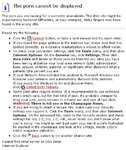to clear and add a few points:
1) todays graphics cards are optimised for 3D graphics, hence they have hardware matrix calculations, very fast chips, multiple parallel vertex shaders, etc. . . . that's what the gamers want. They are an amazingly complex piece of engineering designed to render 3D scenery. Charting is 2D, hence none of their internal hardware features of the 3D graphics cards are used. For this reason alone ATI and nVidia cards are awful for 2D. I've got one of the top of the range nVidia cards on my machine, but when I compared it to a cheap Matrox card I bought off ebay the results were astounding. For 2D I personally think that Matrox cards wins hands down because they specialise in that market, they even have a quad head (4 monitor output cards) if I remember correctly. You also have to bear in mind that if you go with ATI or nVidia based cards they get noisy and hot (read: distracting when you are trading). The top end gamer's graphics cards have very, very big fans (read: very noisy). By contrast some of the Matrox cards have no fans!
2) firewall and anti virus are only need if you accidentally invite things in that you shouldn't. Note the "invite" there. If you surf dodgy sites you are bound to get some silly trojan software downloaded to your machine that could f*ck it up (or you waste a few days trying to track it down and remove it). Prevention is better than cure, so don't surf these dodgy sites, and if you do, do it on another machine that runs a different operating system and/or is on a different network, that way the possibility of harm done is minimalised. An Apple imac/mac mini is pretty handy for this sort of need since there are very few viruses for Mac OS X at the moment (don't worry they are working on it), but the idea is to have a machine around to use that you don't mind "losing" since it won't effect your main trading.
3) the 24" dell monitor can be bought for about £552 off
www.scan.co.uk. It's a very good monitor, just make sure that your graphics card can handle it since it is 1920 x 1080 pixels, over 2 million pixels. If I had my way, and the space, I would use 2 24" dells on a dual monitor Matrox card, rather than have 4 19" monitors - but then again each to their own. The Dell 30" is interesting, and you need to make sure that the graphics cards you buy for it can handle it, 2560 x 1600 means over 4 million pixels! Stupendous value at only £1082 or thereabouts, but the quality of the display is not as good as the 24" which is why most people go for the 24". But if you want real estate there's not better option, just make sure the graphics cards can handle it.
4) dual core or not, generally speaking most PCs are over powered anyway. It's just intel's way of pushing technology forward so they can charge more, obsolete stuff always becomes cheaper. The dual core stuff is good if you want to run multiple applications: play a DVD, surf, chart, etc . . . at the same time, it gives you capacity to spare. But if you are trading why do you need to run those other things? Compared to other programs in, general charting is actually computationally unintensive. Hence if your computer is slowing down when you run Ensign or ESignal you have something wrong with your configuration
5) I tend not to use the latest software, unless I trust the vendor. For that reason alone I won't be touching Windows Vista any time soon. I am also reluctant to download latest drivers since there might not have been enough testing done for them. Don't try to be some company's Guinea Pig (even though I like Guinea pigs)
6) Noise is sometimes overlooked, but believe me it can be a major factor. Having a machine that makes no/very little noise is a god send. When building a machine you can buy lower noise fans even though you pay more for them, they are worth it.
My set up
- windows XP professional, with latest service pack installed
- firewall and anti-virus disabled
- intel dual core 1.8 GHz
- 1 Gig Ram
- ATI graphics card 1950
- 19" (1024 x 1280) illyama monitor with 21" Samsung monitor (1600 x 1200)
- Microsoft natural keyboard and mouse
- 2 SATA hard drives
- DVD drive
- low noise fans
- firefox for general browsing
- microsoft internet explorer for logging onto finspreads
- Ensign software for charting
- DTN datafeed
- ADSL modem and router
Of course if you have ADSL problems there's nothing you can do apart from phoning up the spread betting company to close your positions if you need to. ADSL does not have a service level agreement attached to it, this means that if there are glitches or the line goes down the supplier is not obliged to fix it immediately, although of course it will get fixed eventually.


